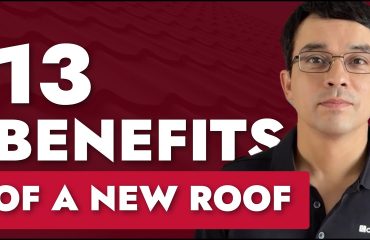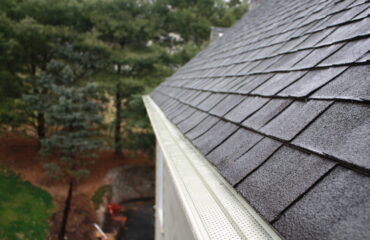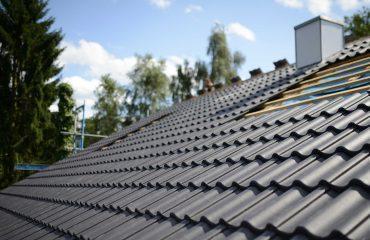Metal roofs are known for their strength and energy efficiency. Asphalt shingles are more affordable and easier to install. So, which one should you choose?
At William Penn Roofing, we’ve helped thousands of homeowners install durable roofs based on their budget, long-term plans, and design preferences. In this guide, we’ll explain the differences between metal roofing and shingles, covering everything from durability and energy efficiency to cost, repairs, and appearance so you can make the right choice for your home.
Stuck between a metal roof and asphalt shingles? Get your free quote today from our licensed roofers. We’ll inspect your roof, review your priorities, and help you choose the perfect fit, whether it’s a lifetime metal upgrade or a reliable shingle installation.
What Is a Roof Metal Roof?
A metal roof can be made from steel, aluminum, zinc, or copper, and comes in different thicknesses (gauges). Most metal roofs are coated for weather protection and are available in a wide range of colors.
Metal roofs can be installed on nearly any pitch, from flat to steep, and are often used on dormers, porches, or full homes. Homeowners who install a metal roof across their entire home benefit from both function and visual impact.
What Are Shingles?
Shingles are made primarily from asphalt and are one of the most common roofing materials in North America. They come in a variety of styles, including large architectural shingles and smaller three-tab shingles.
Most modern shingles are resistant to algae, lichen, and moss. They also contain small granules and color flecks that give the roof its appearance. Shingles are typically installed using a storm nailing method, which involves six evenly spaced nails per shingle to ensure durability and wind resistance.
Choosing The Right Type of Roof For Your Home
When choosing between shingles and metal roofing, think about:
- Your budget: Asphalt shingles are more affordable upfront.
- How long you plan to stay in the home: Metal is a better long-term investment.
- Your goals for the property: Consider whether you’re planning to sell soon or pass the home down.
Metal roofs are ideal if you want a lifetime solution with minimal maintenance. Shingles may be the better fit if you’re prioritizing cost and ease of installation.
| Feature | Metal Roof | Asphalt Shingles |
| Material | Steel, aluminum, zinc, or copper panels | Asphalt-based, granule-covered shingles |
| Lifespan | 40-70+ Years (often lifetime) | ~30 years (may require replacement) |
| Upfront Cost | Higher initial investment | Lower upfront cost |
| Maintenance | Minimal maintenance, rare repairs | May need periodic repairs or replacements |
| Durability | Resistant to wind, fire, and pests | Susceptible to damage from wind, hail, and moisture |
Does a Metal Roof or Shingle Roof Last Longer?
In terms of longevity, metal roofs are a one-and-done solution. Depending on the material, a metal roof can last 40 to 70 years or more. You likely won’t need to replace it in your lifetime.
Shingle roofs have a shorter lifespan, typically around 30 years. However, some manufacturers offer limited lifetime warranties and impact-resistant options, with wind resistance ratings up to 130 mph. Still, when it comes to longevity and resilience, metal is the longer-term option.
Which Type of Roof Is Easier and Cheaper to Install?
Shingle roofs are both cheaper and faster to install. The installation process is straightforward and well-suited to a variety of roof layouts.
Metal roofs, however, require more labor, detailed work, and specialized materials, especially if the roof has multiple slopes or facets. As a result, they’re more expensive to install up front, but they make up for it in durability and performance.
Which Type of Roof Is More Affordable Long Term?
Cost comparisons for each type of roof depend on your long-term priorities. While shingle repairs are generally easier and less expensive, you may need multiple repairs or replacements over the years.
Metal roofs rarely need repairs, and when properly installed, can eliminate the need for future roofing costs entirely. They’re also far more energy efficient, reflecting UV rays instead of absorbing them, which can reduce heating and cooling bills. Asphalt, in contrast, tends to retain heat, increasing energy costs over time.
Does a Metal Roof or Shingle Roof Look Better?
This depends on your personal style and preferences. Both metal roofs and asphalt shingles come in a wide variety of colors and textures. Shingles can mimic natural materials like slate or wood, while metal panels can be customized in size and mimic the look of copper or standing seam steel.
Metal roofs also offer size flexibility: you can choose from 8″, 10″, 12″, 16″ panels, or larger depending on your design goals. No matter your choice, a qualified roofing contractor can help you bring your vision to life.
Which Type of Roof Requires Less Maintenance?
Metal roofs require very little maintenance over their lifespan and rarely need repairs when installed properly.
Shingle roofs, on the other hand, may need occasional patching or replacement due to weather damage or wear. If you want a “one and done” option, metal is the more durable, low-maintenance choice.
Which Type Roof Saves More on Utility Bills?
Metal roofs reflect UV rays, reducing heat absorption to lower your energy bills. Asphalt shingles trap heat, which can increase your cooling costs during warmer months. For long-term energy efficiency, metal is the better performer.
Is Your Roof Due for an Upgrade? Get a Free Estimate Today
Still deciding between a metal roof and asphalt shingles? William Penn Roofing will evaluate your home’s structure, discuss your goals, and help you choose the best roofing option for your budget and priorities.
Request your free estimate today and let our roofing experts install a roof that’s built to last.


